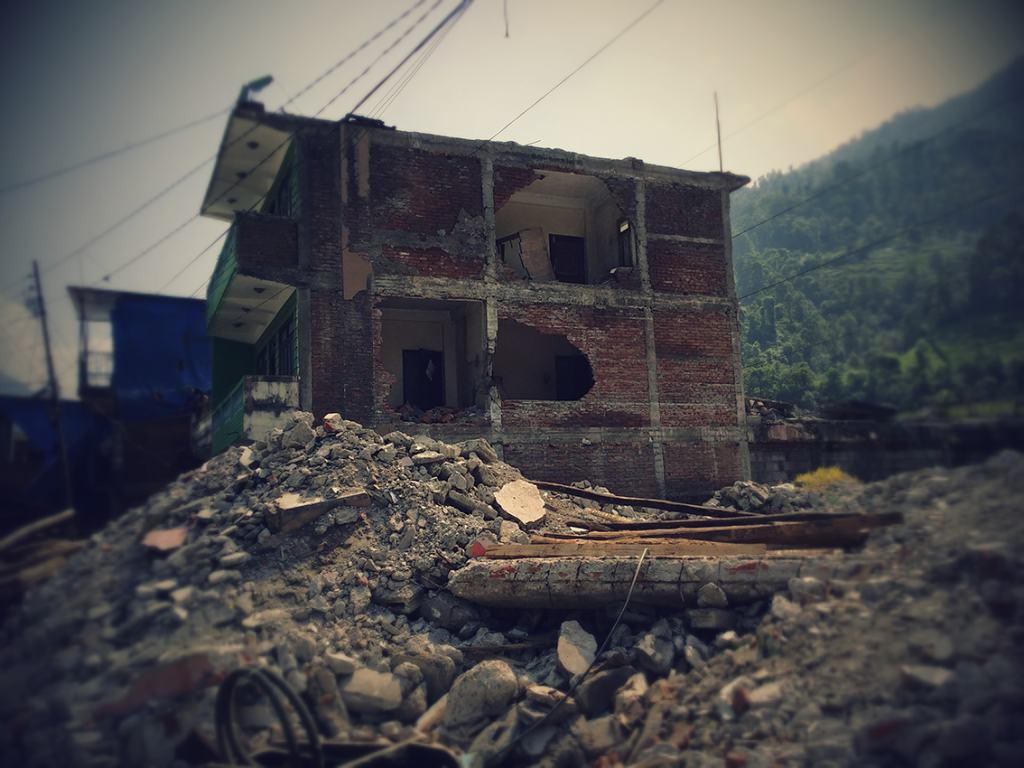Earthquake Recovery
“Beneath the surface of the protective parts of trauma survivors there exists an undamaged essence, a Self that is confident, curious, and calm, a Self that has been sheltered from destruction by the various protectors that have emerged in their efforts to ensure survival. Once those protectors trust that it is safe to separate, the Self will spontaneously emerge, and the parts can be enlisted in the healing process.”
― Bessel A. van der Kolk
Disasters whether natural or man-made all have the potential to severely affect a person’s mental health in different ways.
Earthquakes when compared to other natural disasters, cause the highest rate of damage and debilitating injury. Frequent and unpredictable disruptions can make it tremendously difficult for survivors to continue with their normal lives and mentally recover.

Research has found that following an earthquake:
- A person’s general distress tends to return to normal after about 12 months, but post-traumatic stress (PTSD) reactions do not fade until 18 months after an earthquake. (1)
- The prevalence of PTSD varies widely in earthquake survivors. (2)
- In adults PTSD can be as high as 92% and 95% in children. (3)
- As few as 4.5% children have been found to have PTSD after an earthquake. (4)
Other factors that can severely affect how a person is impacted by an earthquake include:
- Their physical distance from the site of the earthquake
- Whether someone has the money to seek support and relocate to a safer region
- A person’s culture and how they understand mental health
- Vital support from friends, family and their community

Art to Healing in Nepal
In 2015, Art to Healing directly responded to an 8.1 magnitude earthquake in Nepal. This devastating earthquake killed close to 9,000 people, displacing and severely injuring 22,000. Together with The Lotus Centre International (USA), Art to Healing delivered disaster recovery art therapy programming to 30 local organizations, aiding hundreds debilitated by post-traumatic stress.
These programs helped children affected by the earthquake to:
- Understand their nervous systems and cope with unpredictable thoughts and feelings
- Recognize the vital importance of self-care.
- Feel safe and secure
- Manage and express grief and loss
- Build resilience, strength and a healthy sense of self
Whilst enabling remarkable grassroots disaster relief organisations to:
- Quickly learn arts based techniques for supporting victims experiencing post-traumatic stress
- Use Somatic ExperiencingTM techniques to support survivors to manage chaotic thoughts and feelings
- Feel empowered to deal confidently with the psychological devastation left by the earthquake
- Provide the vital support needed to enable traumatized survivors to feel safe enough to return to regular life
“Before Art to Healing Psychological First Aid Program, I did not know how to respond to those affected by the earthquake. However, after the program, I used art therapy with many traumatized children, who were unable to attend school after the earthquake. They were suffering from many behavioral problems, and had many nightmares. The art therapy interventions were very effective with the school children, and many of them are now back in school, and excelling in their studies.”
– Moiya Tamang, TPO Counsellor
1. V.J Carr, T.J Lewin, R.A Webster and J.A Kenardy, “A synthesis of the findings from the Quake Impact Study: A two-year investigation of the psychosocial sequelae of the 1989 Newcastle earthquake,” Social Psychiatry, 32, (1997) 123-136.
2. S Galea, A. K Nandi, & D Vlahov, “The epidemiology of post-traumatic stress disorder after disasters,” Epidemiologic Reviews, 27, no.1 (2005), 78-91.
3. L. Najarian, A.K. Goenjian, D Pelcovitz, F Mandel and B Najarian “The effect of relocation after a natural disaster,” Journal of Traumatic Stress, 14 ( 2001), 511-526; A. K Goenjian, R. S Pynoos, A. M Steinberg & L. M Najarian, “Psychiatric comorbidity in children after the 1988 earthquake in Armenia,” Journal of the American Academy of Child & Adolescent Psychiatry, 34, no.9 (1995), 1174-1184.
4. A Roussos, A. K Goenjian A.M Steinberg, C Sotiropoulou, M Kakaki, C Kabakos, S Karagianni, & V Manouras, “Posttraumatic stress and depressive reactions among children and adolescents after the 1999 earthquake in Ano Liosia, Greece,” American Journal of Psychiatry, 162 no.3 (2005), 530-537.





